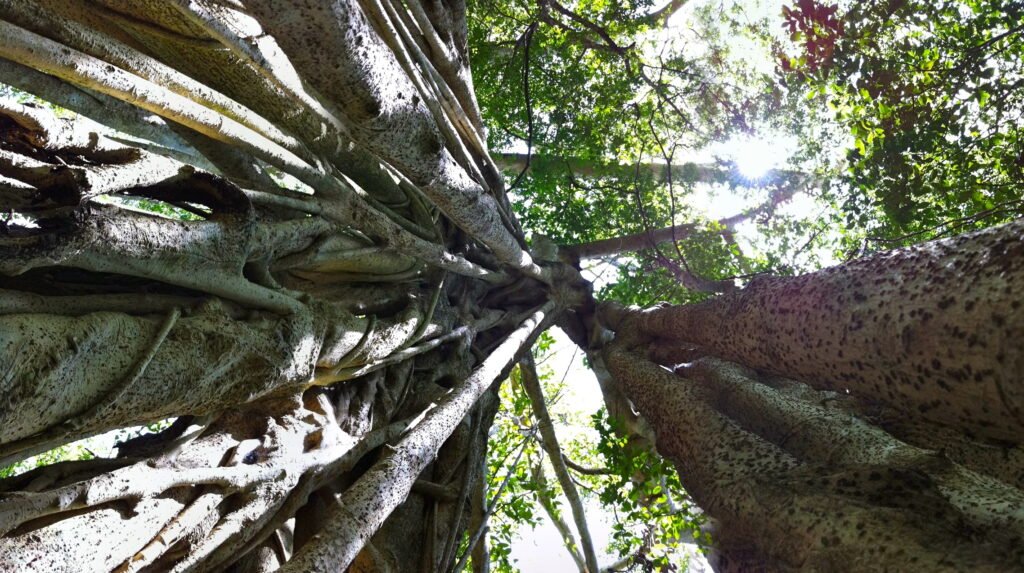A single seed, no bigger than a grain of sand, drifts through the dense, humid air of a rainforest. It lands high on a tree branch, ignored by monkeys, unnoticed by birds, and mostly forgotten by all—except for the tree that will soon become its victim. This is no ordinary seed. It belongs to a strangler fig, one of nature’s most breathtaking and brutal survivors. Strangler figs are both enchanting and ruthless, weaving their emerald vines through ancient forests, choking the life from their hosts with a slow, silent persistence that commands both awe and terror. How do these “beautiful killers” shape the very heart of the jungle? Let’s climb into the tangled canopy and uncover their mysterious world.
The Mysterious Origins of Strangler Figs
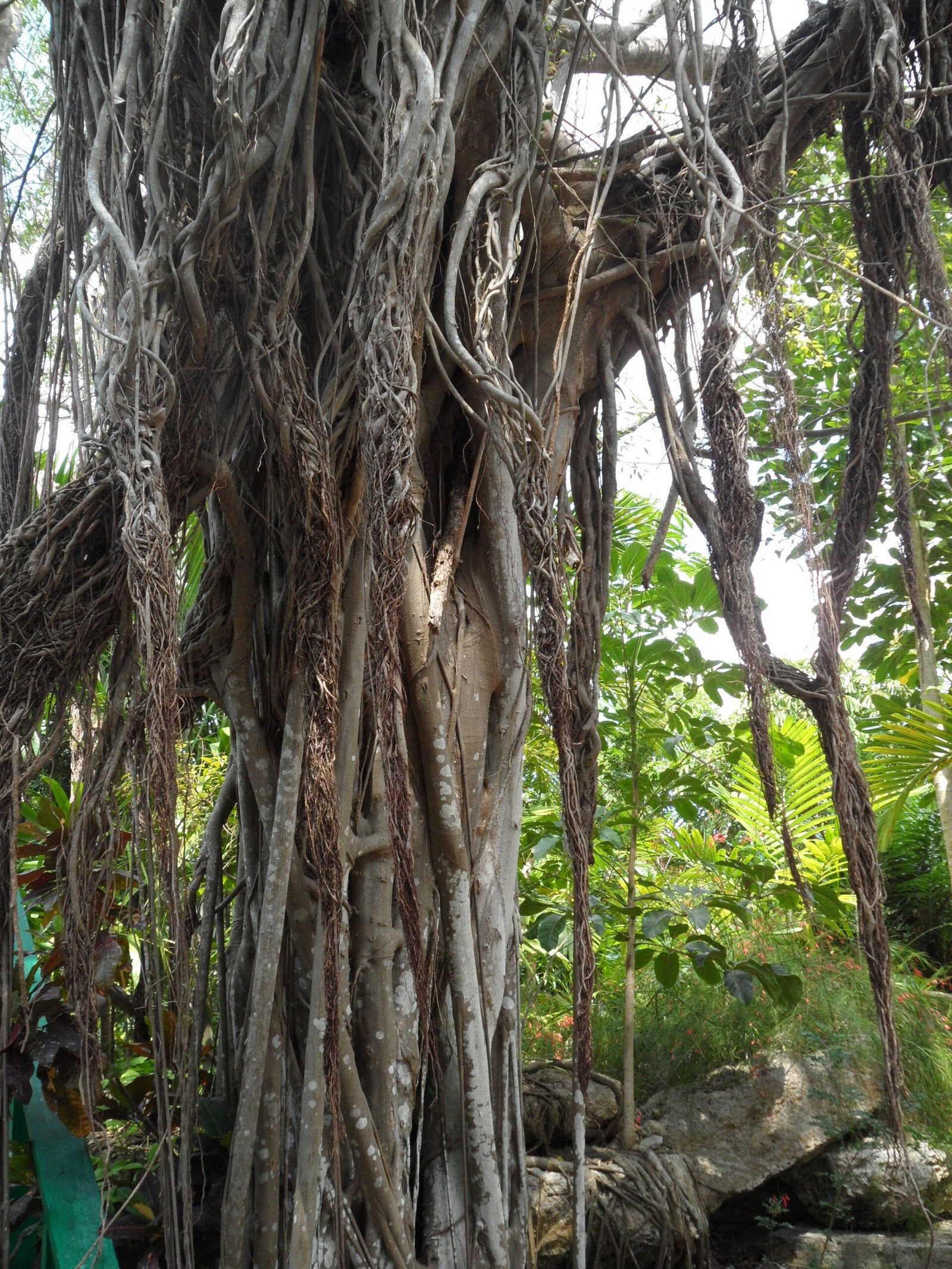
Strangler figs belong to the genus Ficus, a group that includes over 800 species found around the world. Their story begins in tropical rainforests, where life is a relentless competition for light and space. Unlike most trees that start life rooted in soil, strangler figs begin their journey high above the forest floor. Their seeds are often deposited by birds or bats onto the branches of tall trees, setting the stage for a remarkable—and deadly—life cycle. It’s almost poetic how something so small and delicate can eventually become a towering force, forever altering the landscape where it first landed. The origins of these figs are a testament to the wonders of adaptation and the sheer unpredictability of evolution.
An Unusual Start: Epiphytic Germination
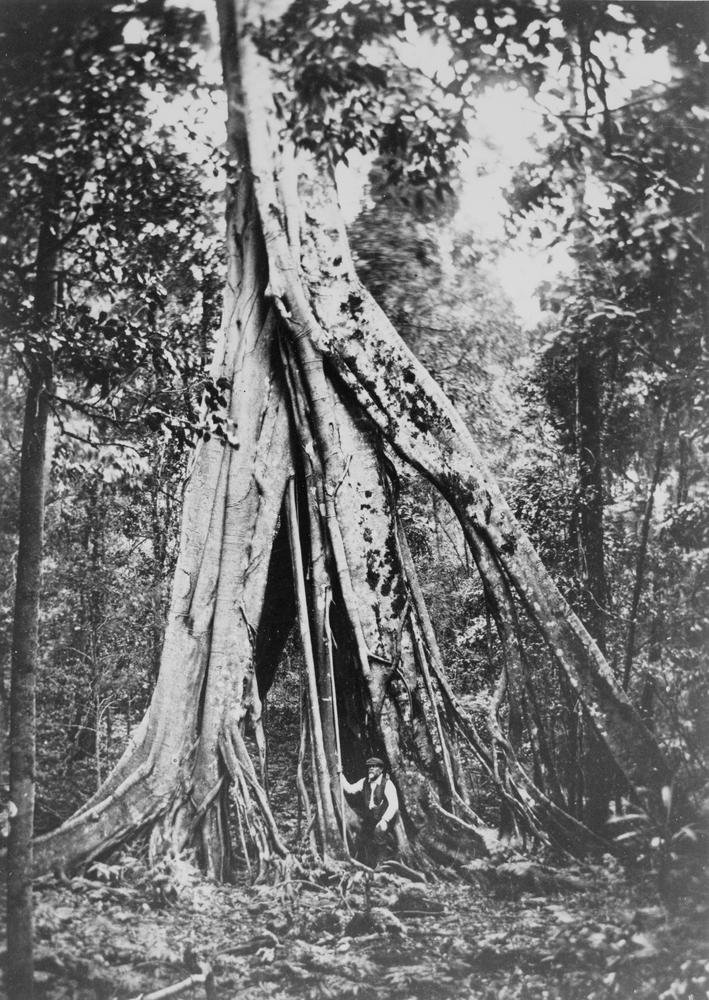
What sets strangler figs apart is their habit of epiphytic germination. This means that, instead of sprouting in the soil like most plants, they germinate on the branches of host trees. The seedling sends out thin roots that dangle toward the ground, searching for soil and nutrients. Meanwhile, the upper part of the plant clings tightly to its host, drawing water from the air and whatever organic debris has collected on the branches. This unusual strategy allows the fig to bypass the dark, crowded forest floor and get a head start in the race for sunlight. It’s a clever workaround in a world where every inch of space and every ray of light is fiercely contested.
The Slow Embrace: How Strangler Figs Grow
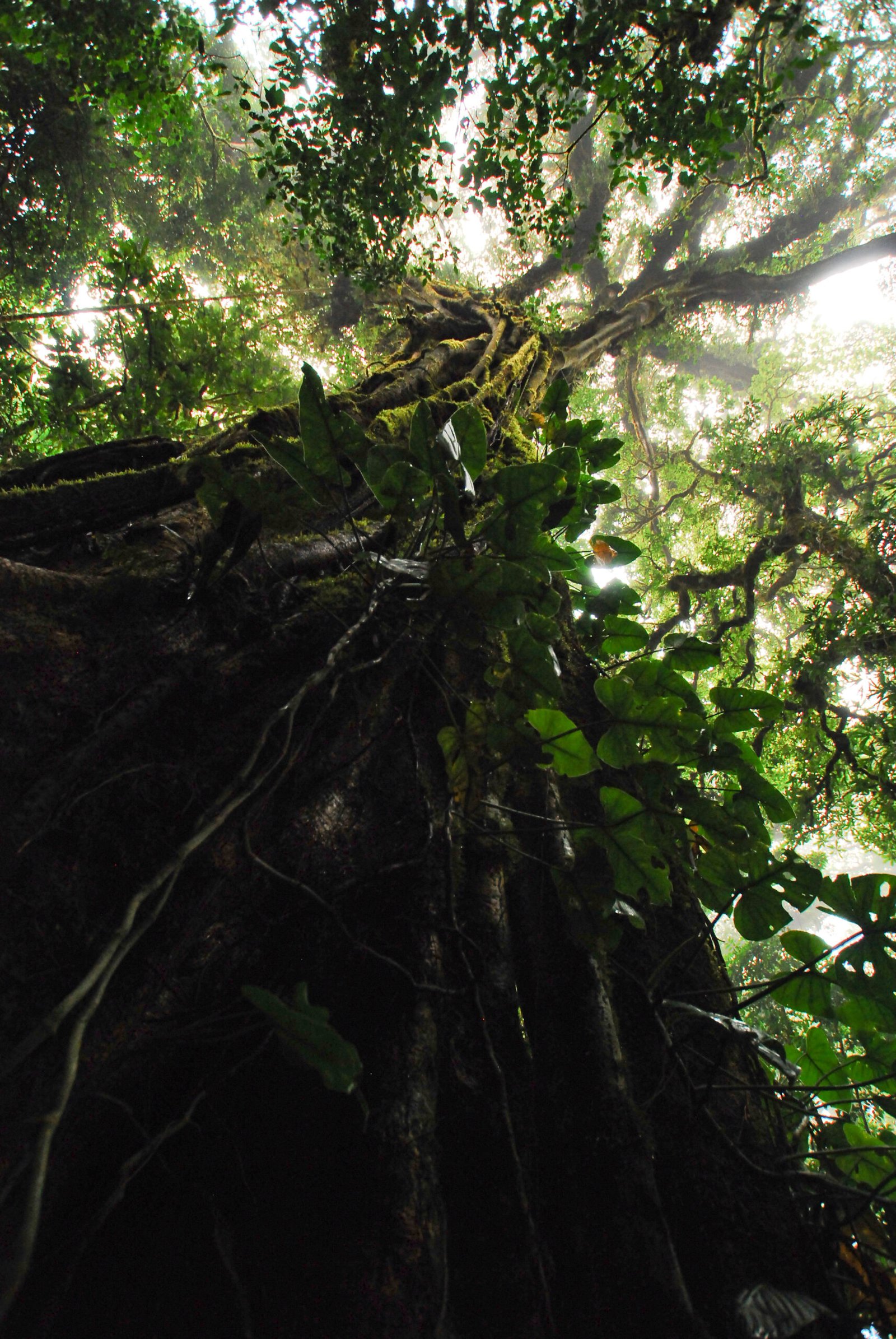
Once a strangler fig has secured itself, it begins to grow in earnest. Its roots thicken and multiply, wrapping themselves around the trunk of the host tree like a living net. Over the years, these roots fuse together, forming a latticework that can become so dense, the original host may be entirely hidden from view. It’s a slow-motion drama that unfolds over decades, with the fig steadily tightening its grip. Some have compared this embrace to a cobra coiling around its prey—a beautiful but deadly hug that ultimately spells doom for the tree caught in its grasp.
The Fatal Squeeze: Strangulation Explained
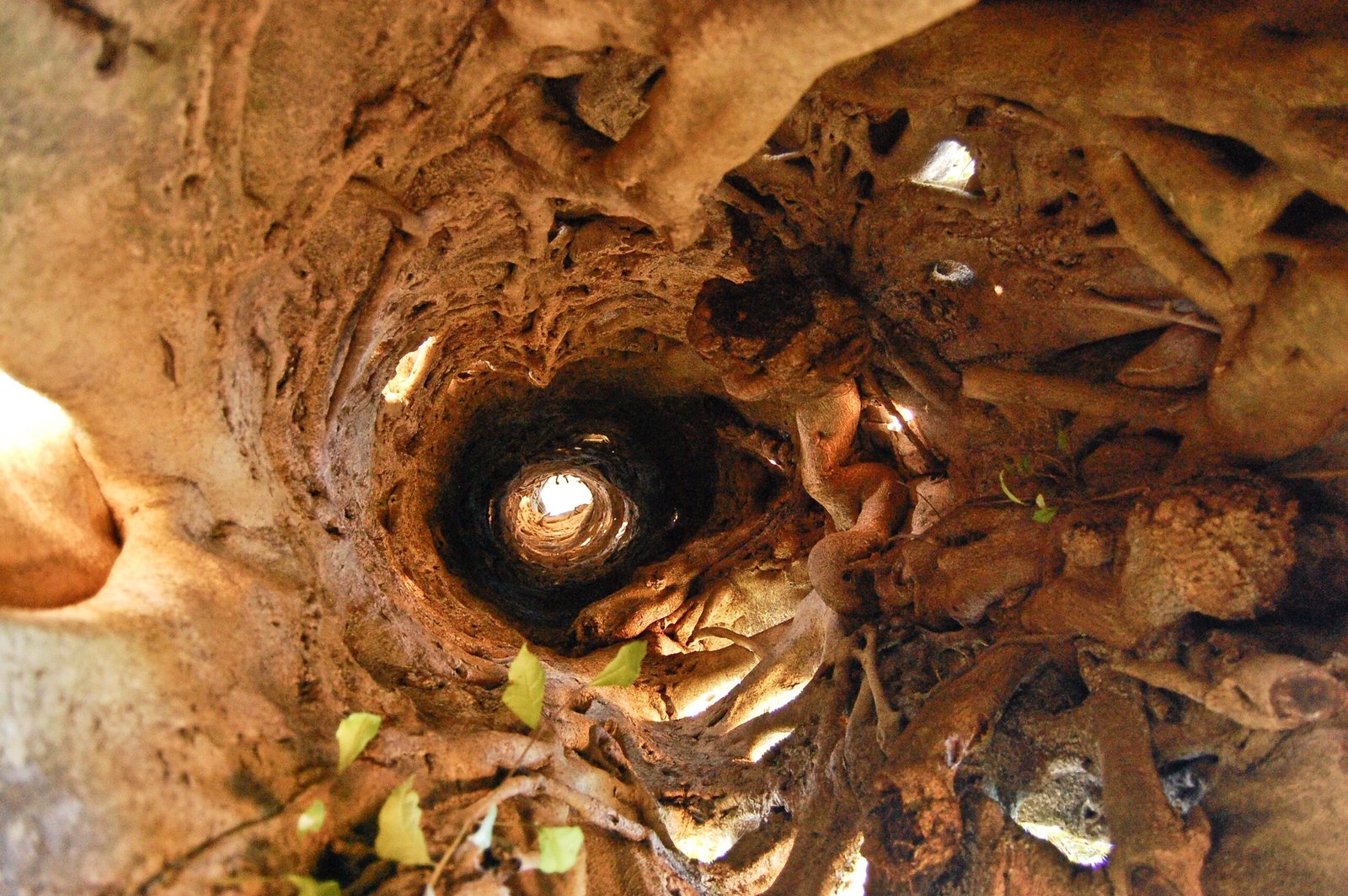
The process by which strangler figs kill their hosts is as fascinating as it is ruthless. As the fig’s roots grow thicker and more numerous, they begin to restrict the flow of nutrients and water through the host’s trunk. The tree, deprived of these lifelines, slowly weakens and dies. Eventually, the host may rot away entirely, leaving only the hollow, columnar skeleton of the fig behind. This macabre transformation is both a tragedy and a triumph—a vivid example of how life and death are intertwined in the rainforest.
Masters of Adaptation
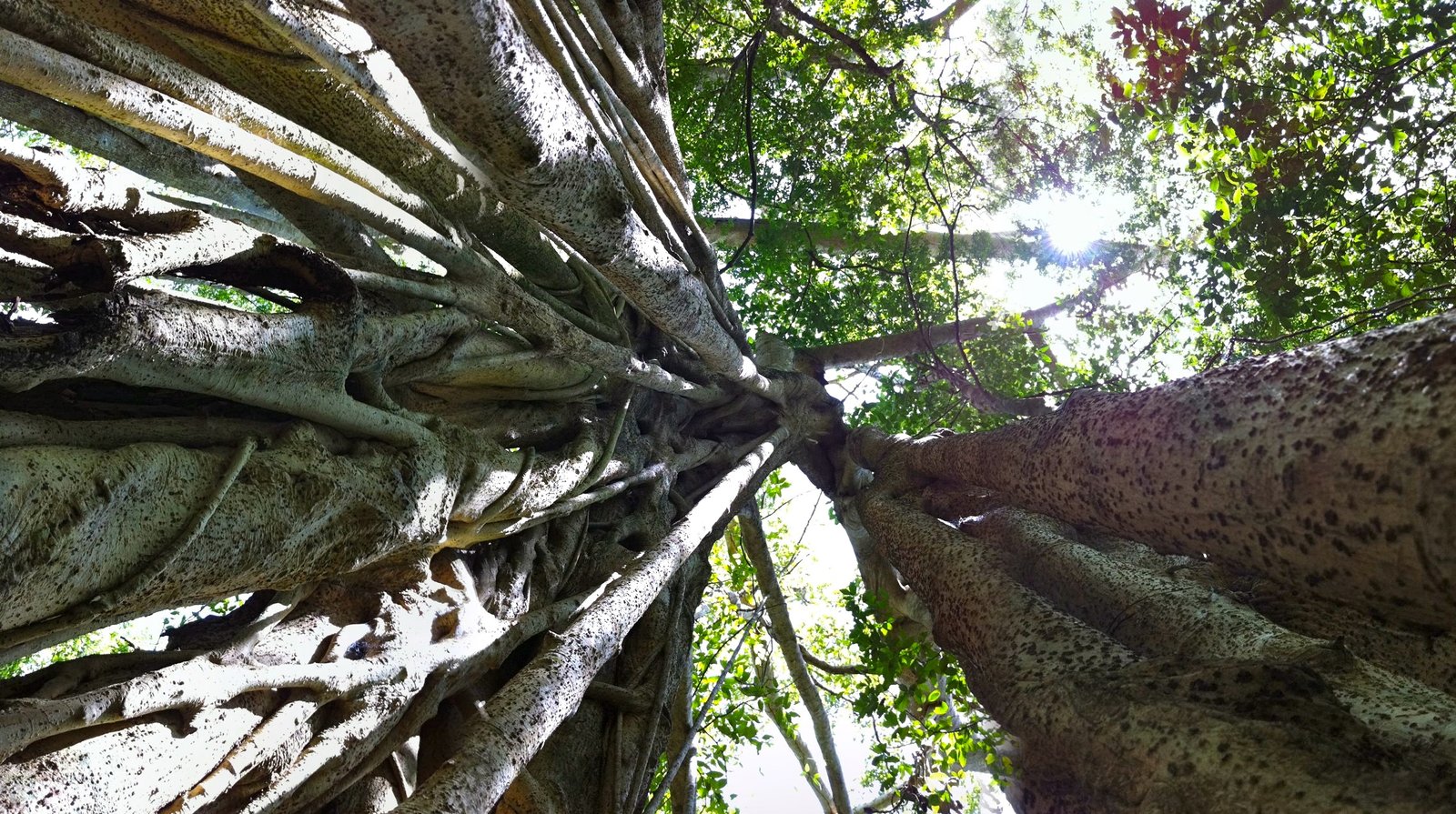
Strangler figs are masters of adaptation, thriving in some of the world’s most challenging environments. Their ability to start life high in the canopy means they avoid many of the dangers faced by seedlings on the forest floor, such as fungal infections, trampling, and herbivory. They can also exploit gaps in the canopy, quickly growing to fill spaces left by fallen trees. This adaptability has allowed strangler figs to colonize rainforests across Africa, Asia, Australia, and the Americas, making them one of the most successful plant groups on Earth.
Sustainers of Rainforest Biodiversity

Despite their deadly reputation, strangler figs play a crucial role in supporting rainforest biodiversity. Their figs are a vital food source for dozens of animal species, including birds, monkeys, and bats. Some animals, like the fig wasp, are entirely dependent on these trees for their survival. The dense, hollow structures left behind by dead hosts also provide shelter for insects, reptiles, and small mammals. In this way, strangler figs act as both destroyers and creators, shaping the rainforest in ways that benefit countless other organisms.
The Ingenious Partnership with Fig Wasps
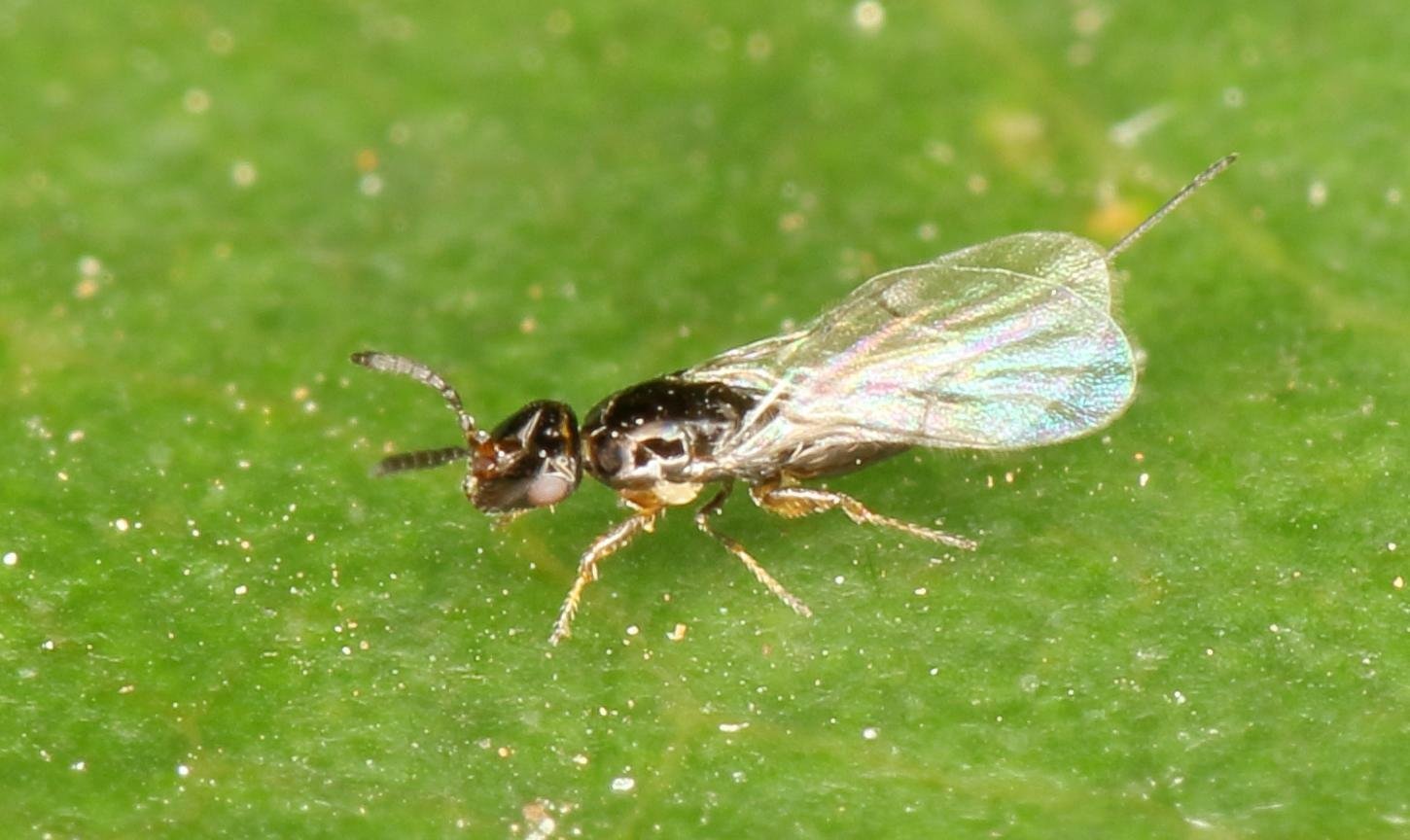
One of the most remarkable aspects of strangler figs is their partnership with tiny fig wasps. Each fig species is pollinated by its own unique wasp species, a relationship that has evolved over millions of years. The wasps enter the fig’s enclosed flowers to lay their eggs, inadvertently pollinating the plant in the process. This mutual dependency is so tight that neither partner can survive without the other. It’s like a microscopic dance of life and death, played out in the heart of every fig fruit.
The Battle for Sunlight in the Canopy
Rainforest canopies are crowded places, with every branch and leaf competing for a piece of the sun. Strangler figs are particularly adept at this battle, using their host’s height to leapfrog over slower-growing trees. Once their roots reach the ground, they can grow rapidly, eventually overtopping the original tree. This ruthless tactic allows strangler figs to become some of the tallest and most prominent trees in the forest, their crowns bursting with fruit and life.
Architects of the Forest Floor
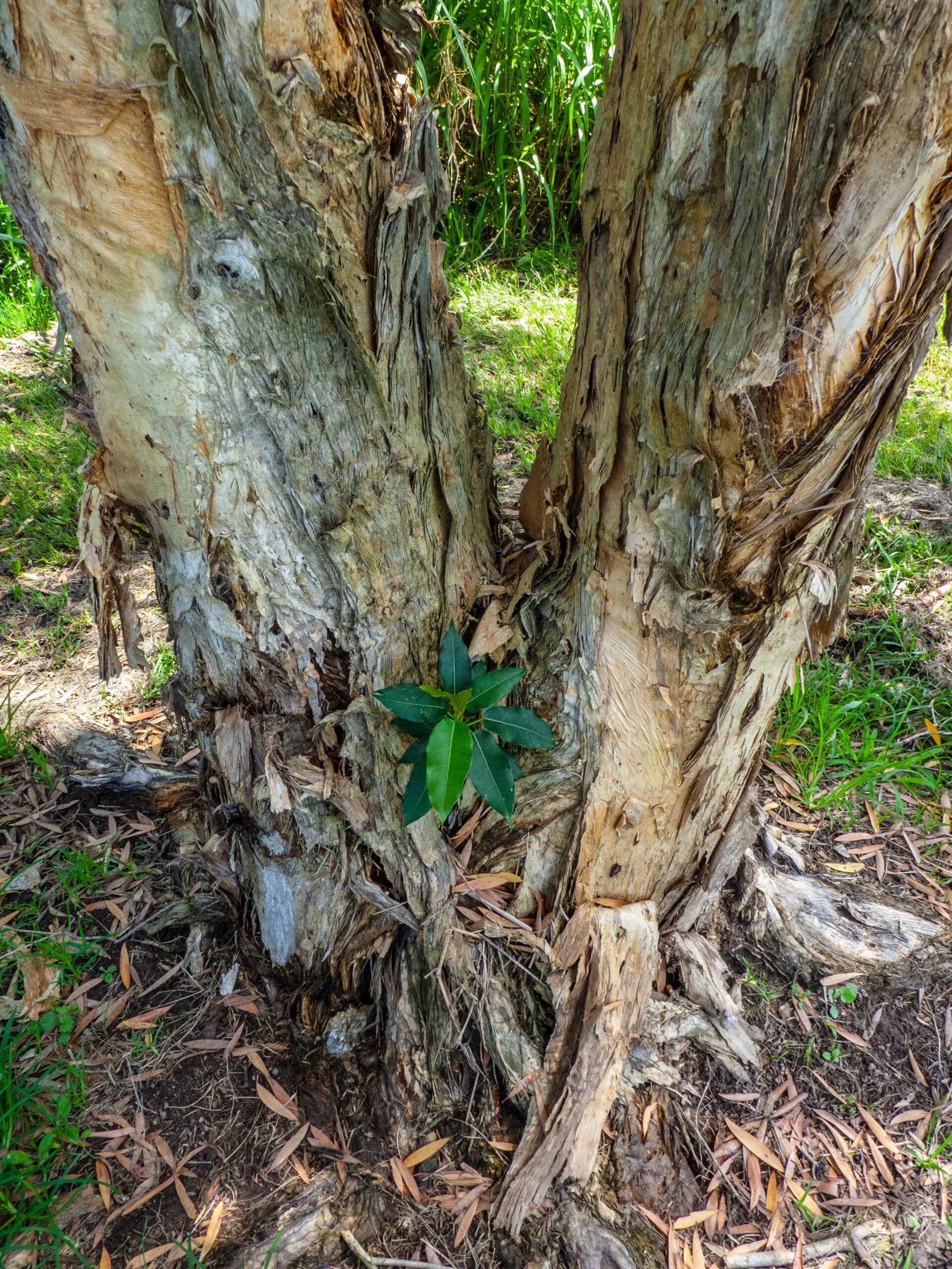
When a strangler fig’s host dies and decays, it leaves behind a hollow, latticed trunk. These structures become natural shelters, nurseries, and hiding places for countless creatures. Ants, snakes, bats, and even small mammals use these hollow towers as homes. In a way, the death of one tree at the hands of a strangler fig gives birth to a miniature ecosystem, teeming with new life and endless possibility.
Figs: The Fruit That Feeds the Jungle
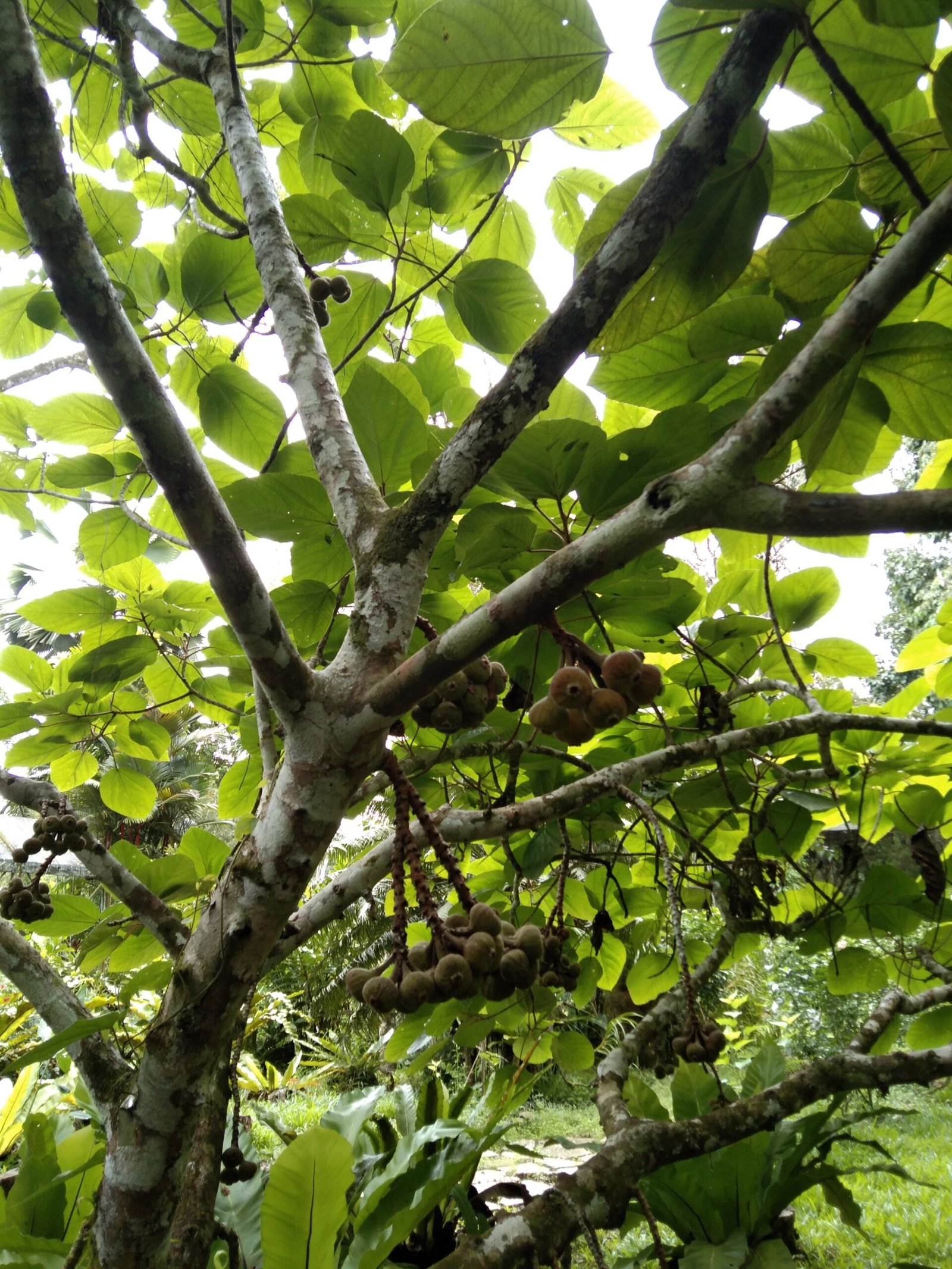
Strangler figs are famous for their abundant fruit. Unlike many trees that fruit only once a year, figs can produce fruit throughout the year, providing a reliable food source when other options are scarce. Birds, bats, and primates flock to these trees, feasting on the sweet, nutrient-rich figs. In some regions, the survival of entire animal populations depends on these timely fruit crops. It’s no exaggeration to say that strangler figs help keep the rainforest’s web of life intact.
Biodiversity Hotspots: Figs and Their Fans
Because so many animals rely on figs for food and shelter, these trees often become hotspots of activity. During fruiting periods, a single strangler fig can attract dozens of species in a single day. Researchers have observed flocks of hornbills, troops of monkeys, and swarms of butterflies all congregating around a fruiting fig. The energy and vibrancy of these gatherings are a testament to the fig’s central role in the jungle’s daily drama.
Living Landmarks and Sacred Trees
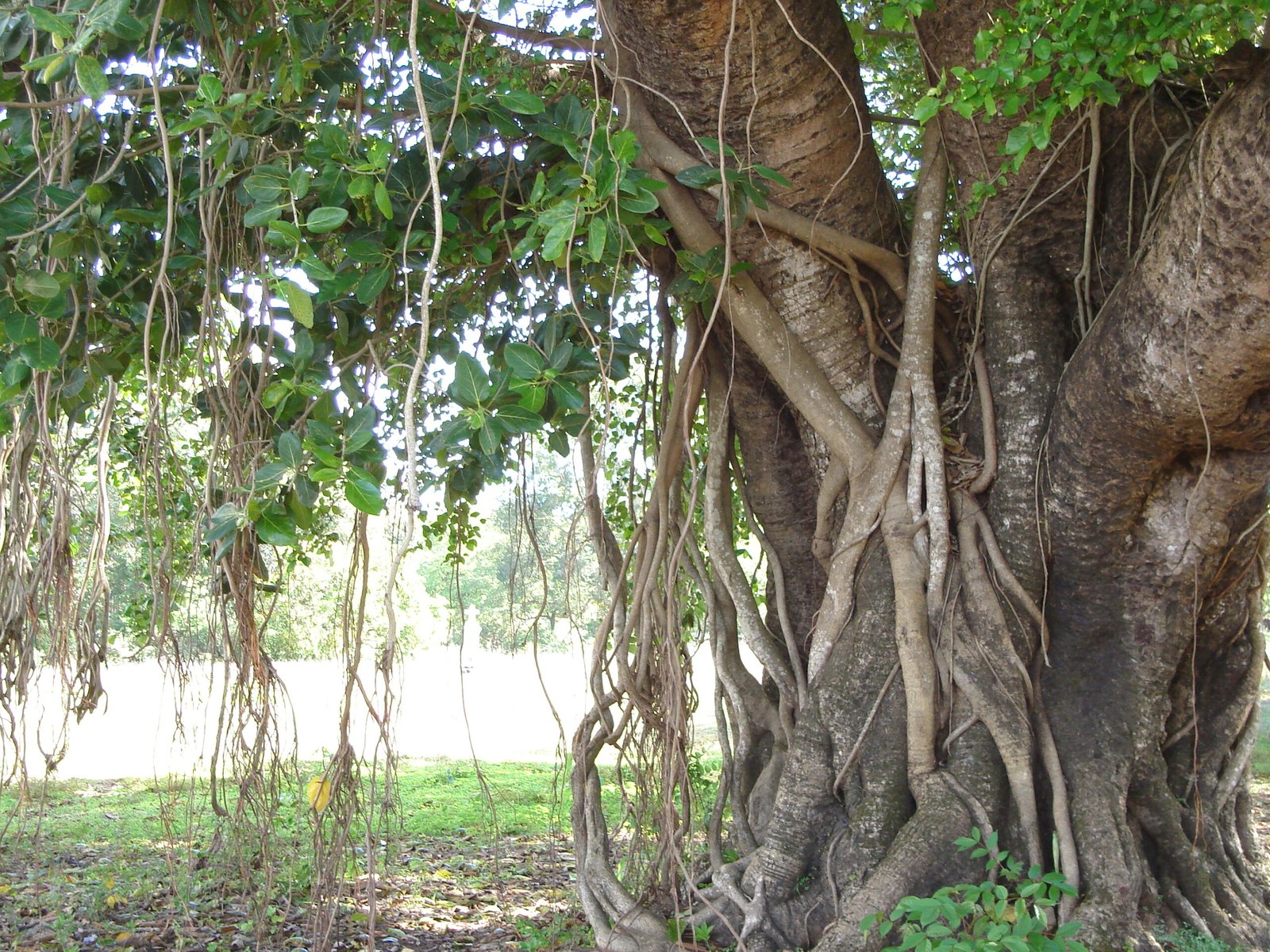
In many cultures, strangler figs are more than just plants—they are living landmarks and objects of reverence. Some ancient figs are believed to be hundreds of years old, their sprawling roots and towering trunks inspiring awe and wonder. In parts of Asia and Africa, fig trees are associated with spirits, ancestors, or gods. They serve as gathering places, shrines, or even courts of law, reminding us that the relationship between humans and these trees stretches far beyond biology.
Survival Strategies: Outsmarting Predators and Pests
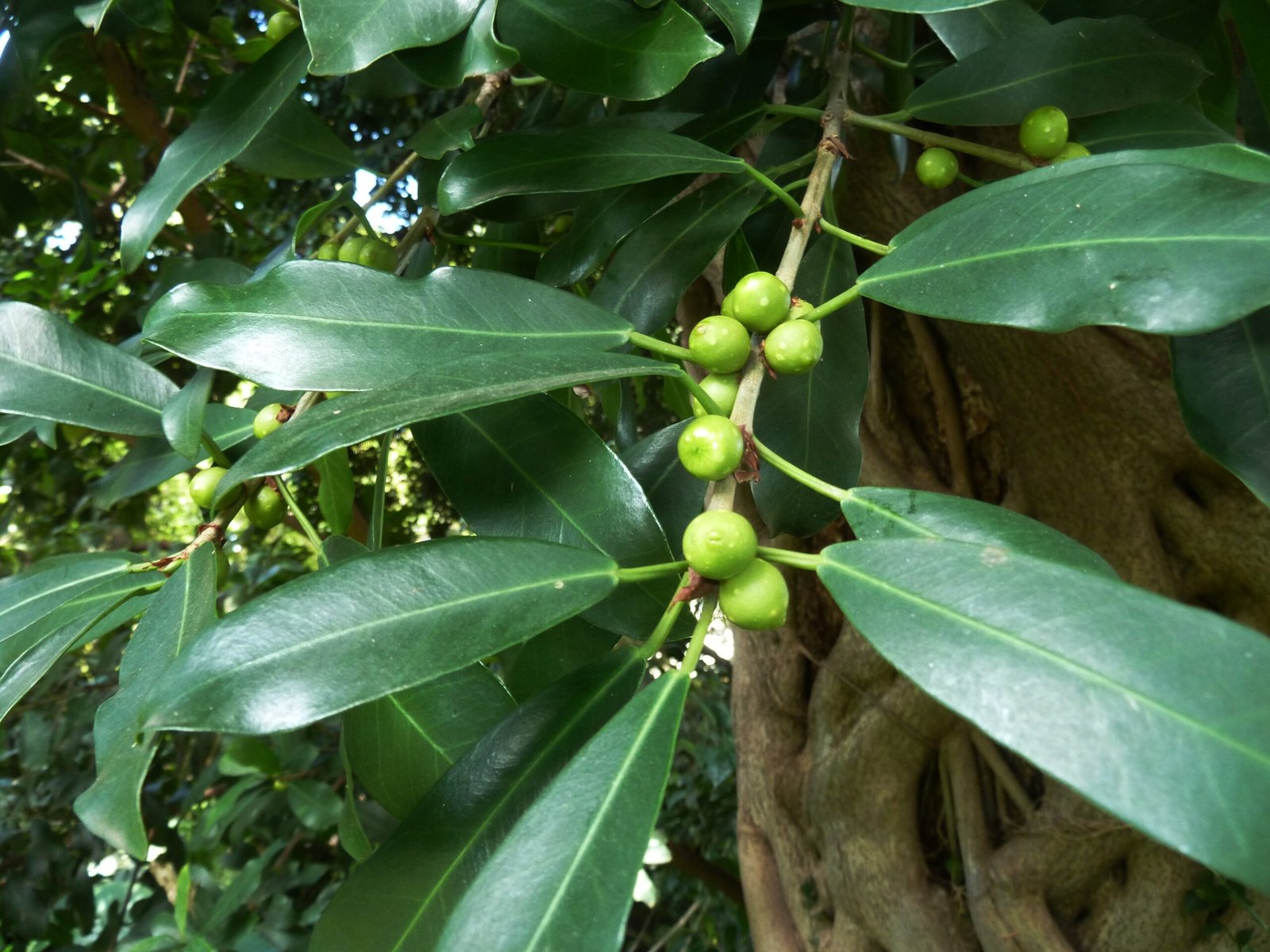
Strangler figs have developed clever tactics to survive in a world full of hungry mouths. Their leaves contain latex and bitter compounds that deter most herbivores. Some species can even change leaf shape or texture as they grow, making them less attractive to insects. The fig’s partnership with wasps also helps defend the tree, as wasp larvae can attack and kill parasitic insects that threaten the developing seeds. It’s like a botanical game of chess, with each move carefully calculated for survival.
Climate Change and the Future of Strangler Figs
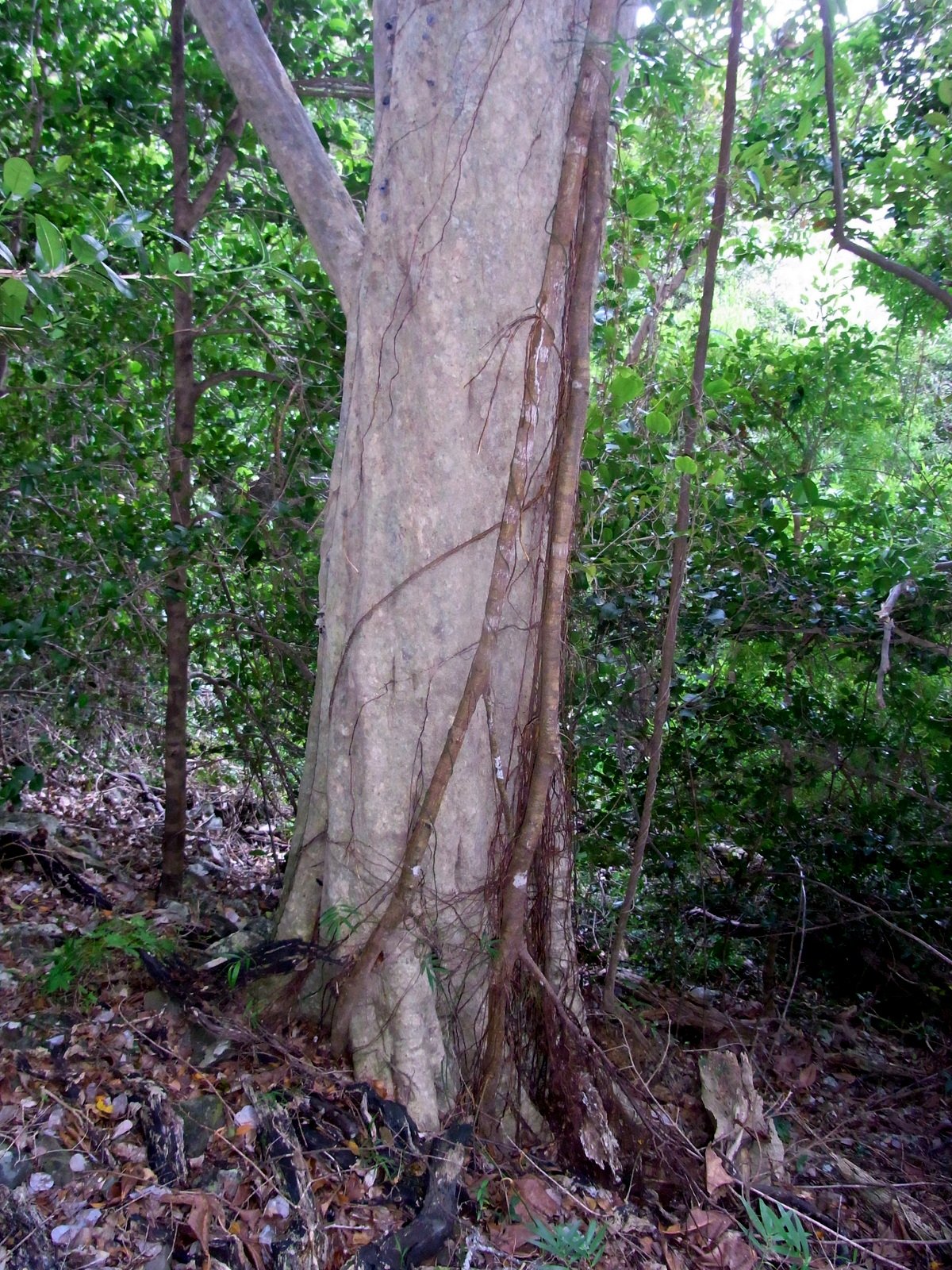
As climate change disrupts rainforests worldwide, the fate of strangler figs hangs in the balance. Rising temperatures and shifting rainfall patterns can stress these trees, making them more vulnerable to disease and drought. At the same time, changes in animal populations could threaten the delicate relationships between figs and their pollinators. Scientists are racing to understand how these beautiful killers will respond to a rapidly changing world, knowing that their future will shape the fate of entire ecosystems.
Strangler Figs in Urban Landscapes

Surprisingly, strangler figs have found new homes in some of the world’s busiest cities. In places like Singapore and Miami, these trees are planted along streets and in parks for their shade and dramatic appearance. Their twisting roots and broad canopies bring a touch of wildness to urban life, reminding city dwellers of the raw power and resilience of nature. Yet, even in these new settings, their tendency to overtake other trees and structures keeps gardeners and city planners on their toes.
Myths, Legends, and Folklore
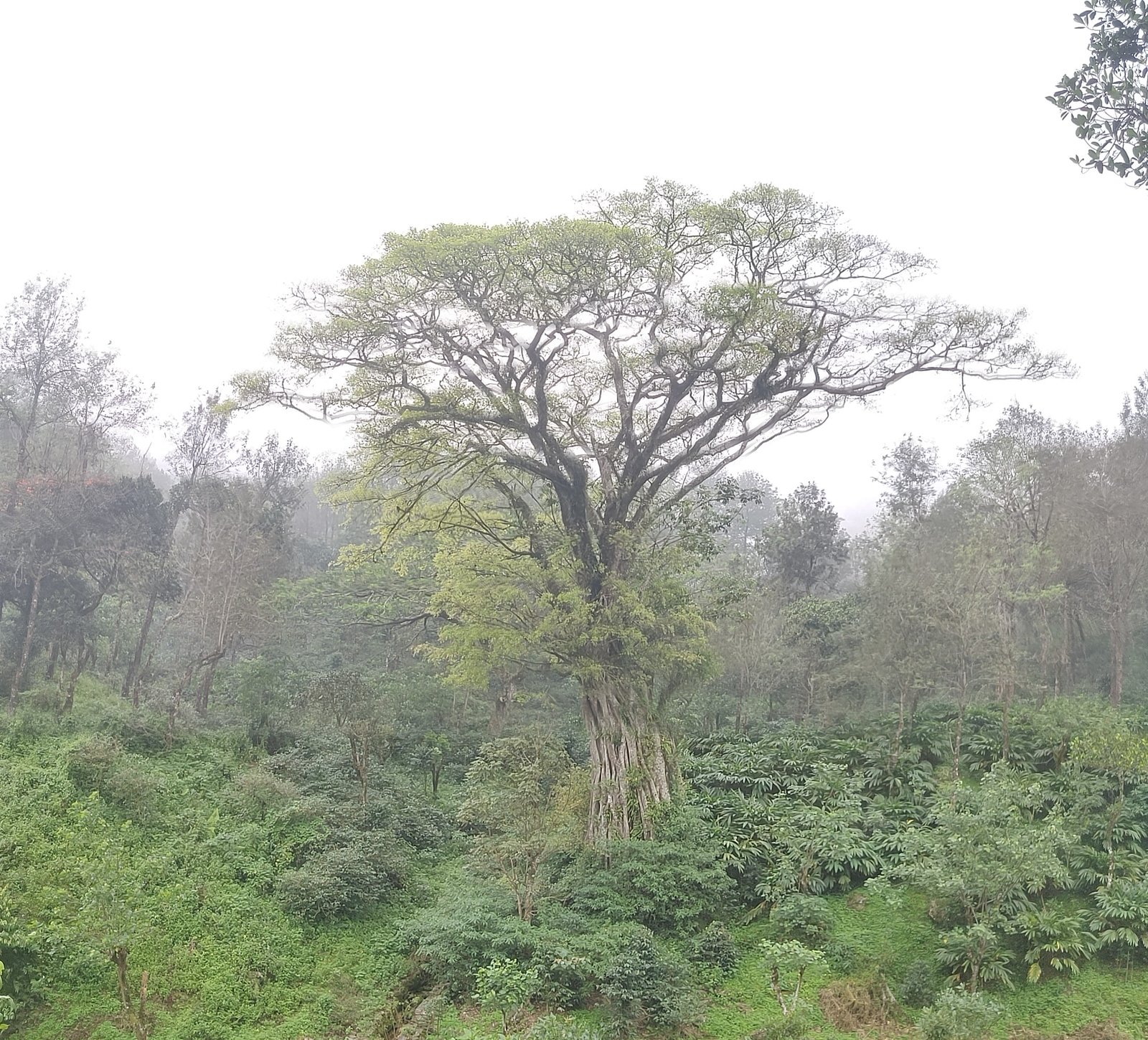
Strangler figs are steeped in myths and legends. In some cultures, they are seen as protectors, sheltering spirits and ancestors. In others, they are feared as haunted places where ghosts linger. Stories abound of travelers who lost their way in the tangled roots, or of ancient kings who held court beneath their branches. These tales reflect the deep fascination—and occasional unease—that people feel toward these mysterious trees.
Scientific Discoveries and Ongoing Research

Scientists have only begun to unravel the secrets of strangler figs. Recent research has revealed new insights into their genetics, reproductive strategies, and ecological impacts. Botanists are studying how figs communicate with their wasp partners, while ecologists are mapping the ripple effects of fig fruiting on animal populations. Each discovery brings new questions, sparking further exploration into the hidden lives of these remarkable plants.
Personal Encounters: Awe and Wonder in the Jungle
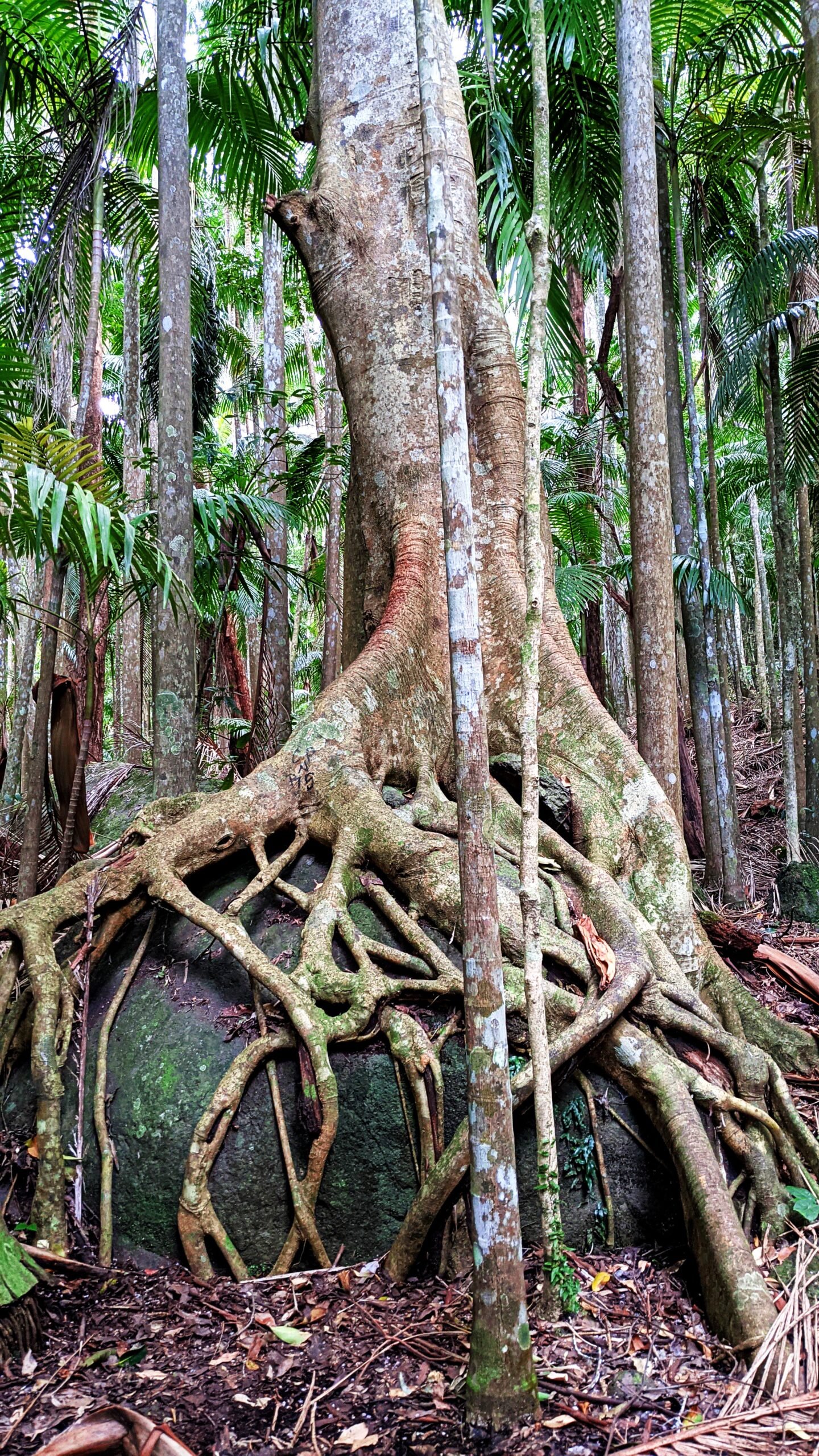
Anyone who has stood beneath a strangler fig can attest to its power and majesty. The sheer scale of the roots, the cool darkness inside a hollow trunk, the flurry of birds and butterflies feasting on ripe fruit—these are moments that linger in the memory. For many, seeing a strangler fig is a reminder of the rainforest’s wild beauty and the relentless drive of life to survive, adapt, and thrive against all odds.
Why Strangler Figs Matter—Now More Than Ever
In a time when forests are disappearing at an alarming rate, the story of the strangler fig is more relevant than ever. These trees are living proof of nature’s resilience, its creativity, and its sometimes harsh sense of justice. They remind us that every death can spark new life, and that even the most ruthless survivors can be vital to the world around them. If we want to protect the rainforest and its wonders, we must understand—and cherish—the beautiful killers in our midst.

